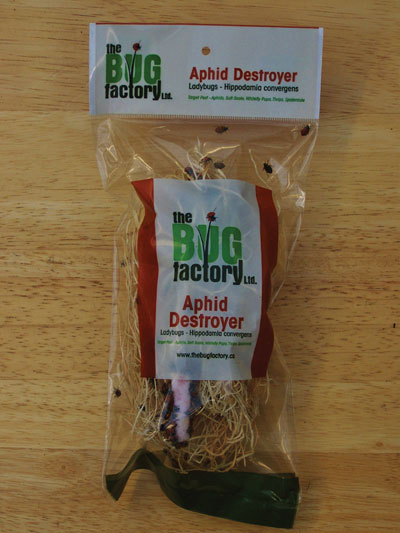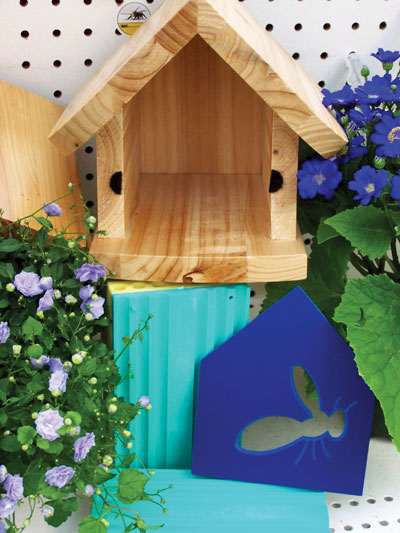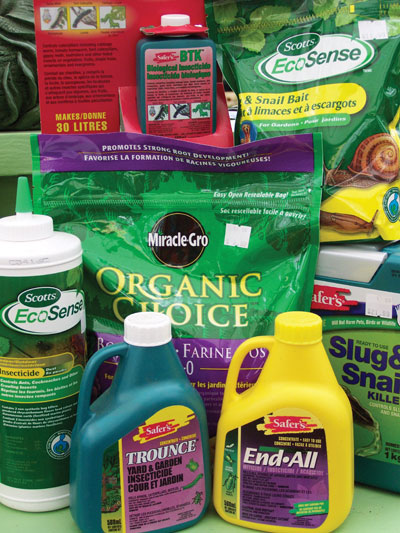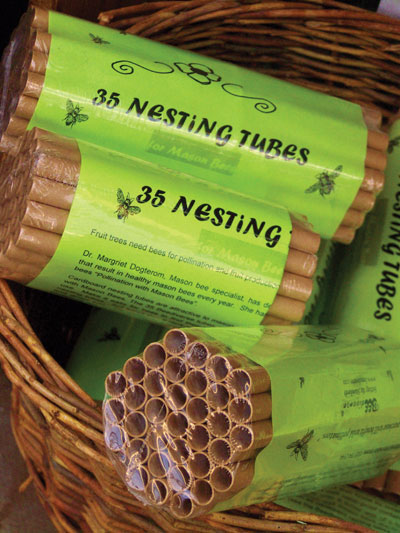
When I was a kid growing up in Winnipeg during the late 1960s and early ’70s, I spent most of my summers in nearby
Assiniboine Park.
When I was a kid growing up in Winnipeg during the late 1960s and early ’70s, I spent most of my summers in nearby
Assiniboine Park. Just as mosquito season approached, huge fogger trucks would suddenly appear, spraying clouds of DDT or Malathion throughout the park regardless of passersby. In fact, many of the kids (including myself) used to follow the trucks on their bikes, driving through those pesticide drifts like they were playing in the fog. The intention here was good – controlling the insatiable hordes of bloodsucking insects – but the liberal spraying of these chemicals had well-documented long-term human health and environmental impacts.
  |
|
| From left to right: Recyclable cardboard carry boxes, live ladybugs for aphid control. Advertisement
|
To say that the times have changed is a bit of an understatement. The public is much better informed on both aforementioned issues and the current “Green Revolution” and this will definitely have an impact on what we can and cannot sell in the nursery industry.
The changing public opinion
If there is one aspect of the environmental movement that has impacted garden centres the most, it is the push to ban chemical pesticides used for cosmetic purposes. Overall, the public seems to be in agreement – as evidenced by the many municipal and provincial bans (including Ontario, Quebec and pending bans in Manitoba, Newfoundland, and possibly British Columbia and Nova Scotia). Even some box stores, such as Home Depot and Rona, have discontinued their chemical pesticide sales due to public pressure.
  |
|
| From left to right: a mason bee lodge for home gardens and a selection of organic pesticides. |
So how did these chemicals become such an integral part of everyday gardening here in North America? Did we just wake up one day somehow believing that organophosphates (among others) were the best thing since sliced bread? In a word, no.
General pesticides were introduced to homeowners back in the 1920s, when companies spent millions of dollars and subsequent decades winning us over to the so-called benefits of these wonder chemicals. Cynicism aside, these were valid products meant to fill a need (i.e., household pest control) and generate corporate profit. Over time, we have learned that many of these chemicals have harmful residuals and the tide of public opinion has definitely turned against them.
  |
|
| From left to right: From left to right: mason bee nesting tubes and new bacterial-based fungicide Serenade.
|
By way of example, let me tell you a story about a young graphic designer named Theodor Geisel who in the late 1920s created a very successful series of animated advertisements for a line of pesticide marketed as FLIT. These cartoons were prominently featured in periodicals such as the New Yorker, where they won the public over with their humorous look at pesticide control made easy by modern chemicals. Fast forward more than 40 years to 1971 and that same Theodor Geisel – now known as the children’s author, Dr. Suess – published perhaps the most unabashed condemnation of “modern methods” destroying the natural world in his book, The Lorax. The bottom line here is that personal and public opinion has definitely soured towards domestic chemical pesticides, and we have to respond by either discontinuing their sale altogether or at least making
organic options readily available to our eco-friendly customers.
Organic alternatives
Instead of lamenting the loss of banned pesticides, we should be educating our customers about the many organic options available, and to be honest, we have quite an arsenal at our disposal. To name just a few: beneficial insects (i.e., ladybugs for aphids, nematodes for lawn grubs or weevils, predator mites), organic-based pesticides (i.e., insecticidal soap, pyrethrum), bacterial-based pesticides (i.e., BTK for cabbage looper, and the newly introduced fungicide, Serenade) and barrier products such as diatomaceous earth, Tanglefoot paste and copper strips for slugs. We should also be showing our customers which plants (i.e., Nepeta, Achillea, Foeniculum) will naturally attract those beneficial insects, so they can see nature in action in their own gardens.
Reconnecting with nature
The best way to reacquaint our customers with the natural world is through seminars, and it is particularly important to include children in these, as they represent the next generation of potential clients. You will attract more people (and sales) with free events, but you should still require people to register for them, leaving their name and phone number. Our most successful seminars this past year have been on cultivating mason bees for home pollination, but a few other suitable topics would include gardening for birds, designing with native plants or even organic vegetable gardening.
Practising what we preach
Last but not least is practising what we preach, which means using those organic pesticides and eco-friendly methods for our own plant maintenance and nursery upkeep. As well, we should make sure that the packaging we send our customers home with is recyclable – so consider cardboard carry boxes, compostable plastic bags and trunk liners, or even reusable carry bags. Leading by example shows our customers we can successfully operate our respective businesses using environmentally friendly products and methods. They in turn are going to want to buy into that success for their own gardens.
Print this page